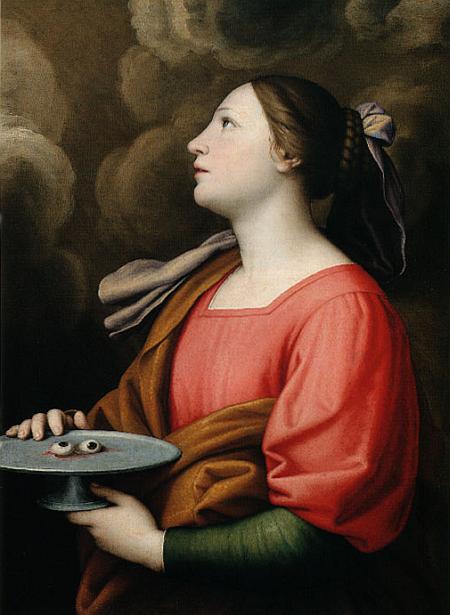
Lucy of Syracuse: Between Myth and Mission, An Eternal Light of Mercy
Exploring the Martyrdom and Worship of St. Lucy, Patroness of the Eyes and Icon of Devotion
St. Lucy of Syracuse, an enigmatic figure and inspirer of devotion, boasts acts of martyrdom in Greek and Latin dating back to ancient times, generating debates about her historicity. While some fervently defend her authenticity, others question the veracity of the accounts, though without disputing her historical existence.
The different Greek and Latin redactions of the acts of martyrdom have shaped two distinct branches of the tradition, influencing numerous hagiographic compositions. Lucia, the protagonist of a compelling martyrdom, begins her journey with a pilgrimage to Catania, experiencing prophetic visions and deciding to consecrate herself to Christ.
The plot becomes complicated when Lucia sells her father’s property to donate the amount to charity. Her Christian choice, denounced by her betrothed, brings her before Governor Pascasius, sparking an agon of faith and courage. Lucia, despite suffering heinous tortures, maintains her purity and declares her spiritual immovability.
The date of her martyrdom, perhaps in 304, is a matter of debate, but December 13 is unanimously celebrated as the dies natalis of St. Lucy. The cult of Lucy as the patron saint of the eyes spread over the centuries, fueled by varied iconographic representations.
The iconography of Lucia, holding her eyes, emerges in the 14th century, adding a layer of meaning to her patronage of sight. Religious images become vehicles of devotion and faith, reflecting Lucia’s etymological connection to “lux” and her promise of material and spiritual light.
Lucia’s patronage of sight is perpetuated, and the cult of the saint finds roots in Syracuse, Venice and beyond. The translation of her relics, first from Syracuse to Constantinople and then to Venice, helps solidify her status as co-patroness of the lagoon city.
The mystery around Lucia also extends to her connection with pagan festivals and the various dates of celebration in the liturgical calendar. The duality between historical and mythological interpretations fuels the enduring appeal of Lucy of Syracuse, a figure who continues to shine in the collective imagination as a symbol of light, mission and mercy.
